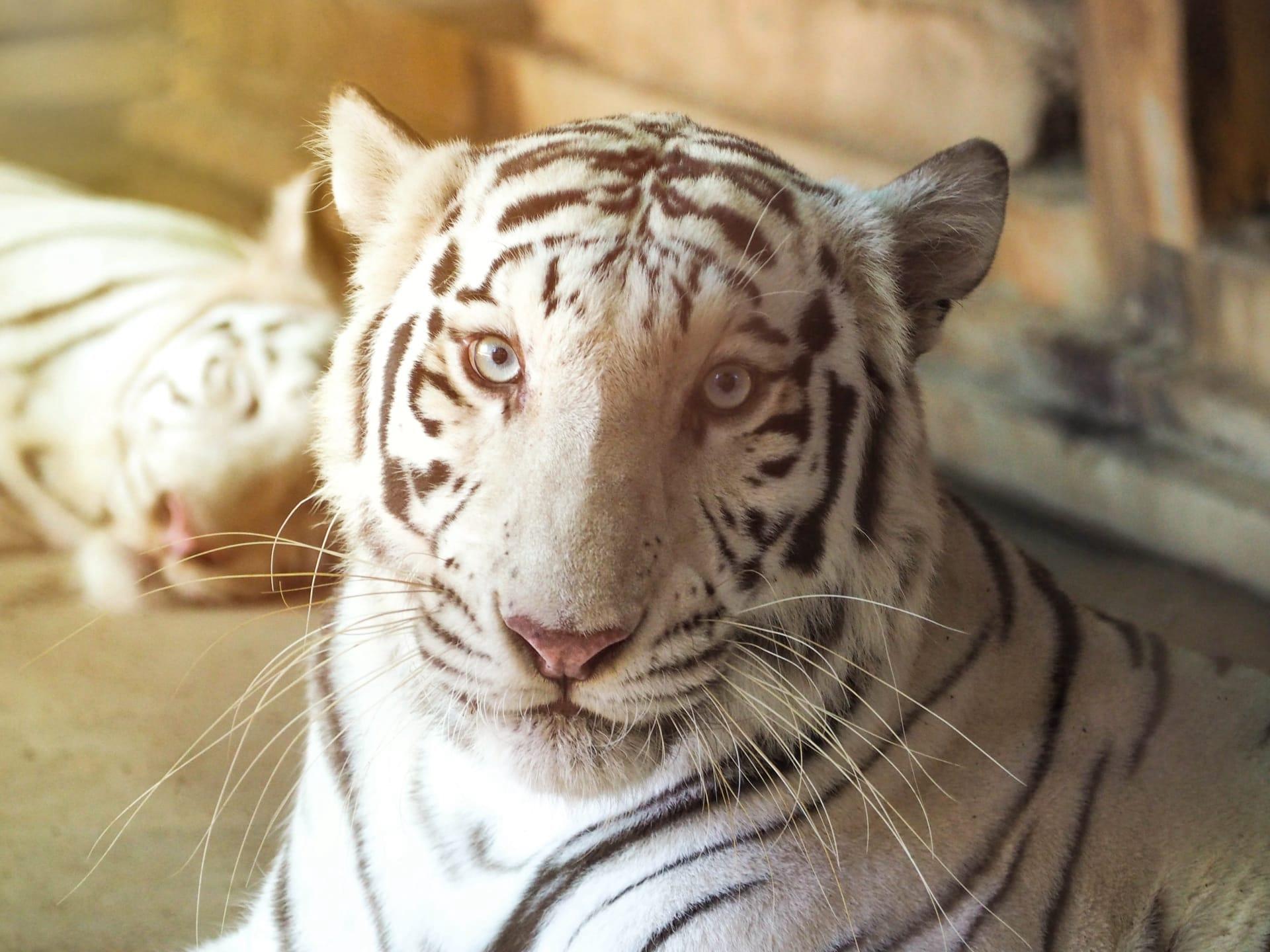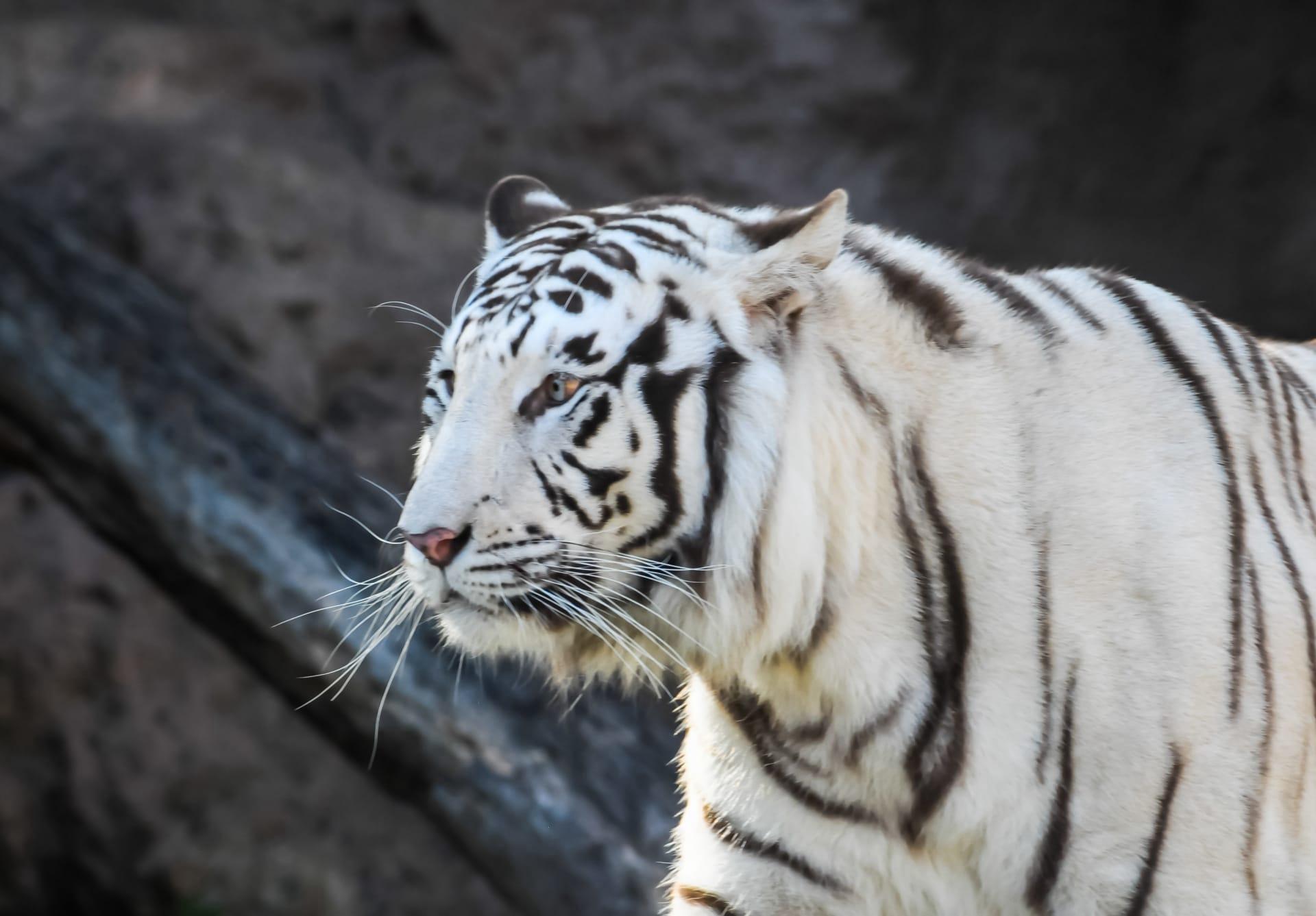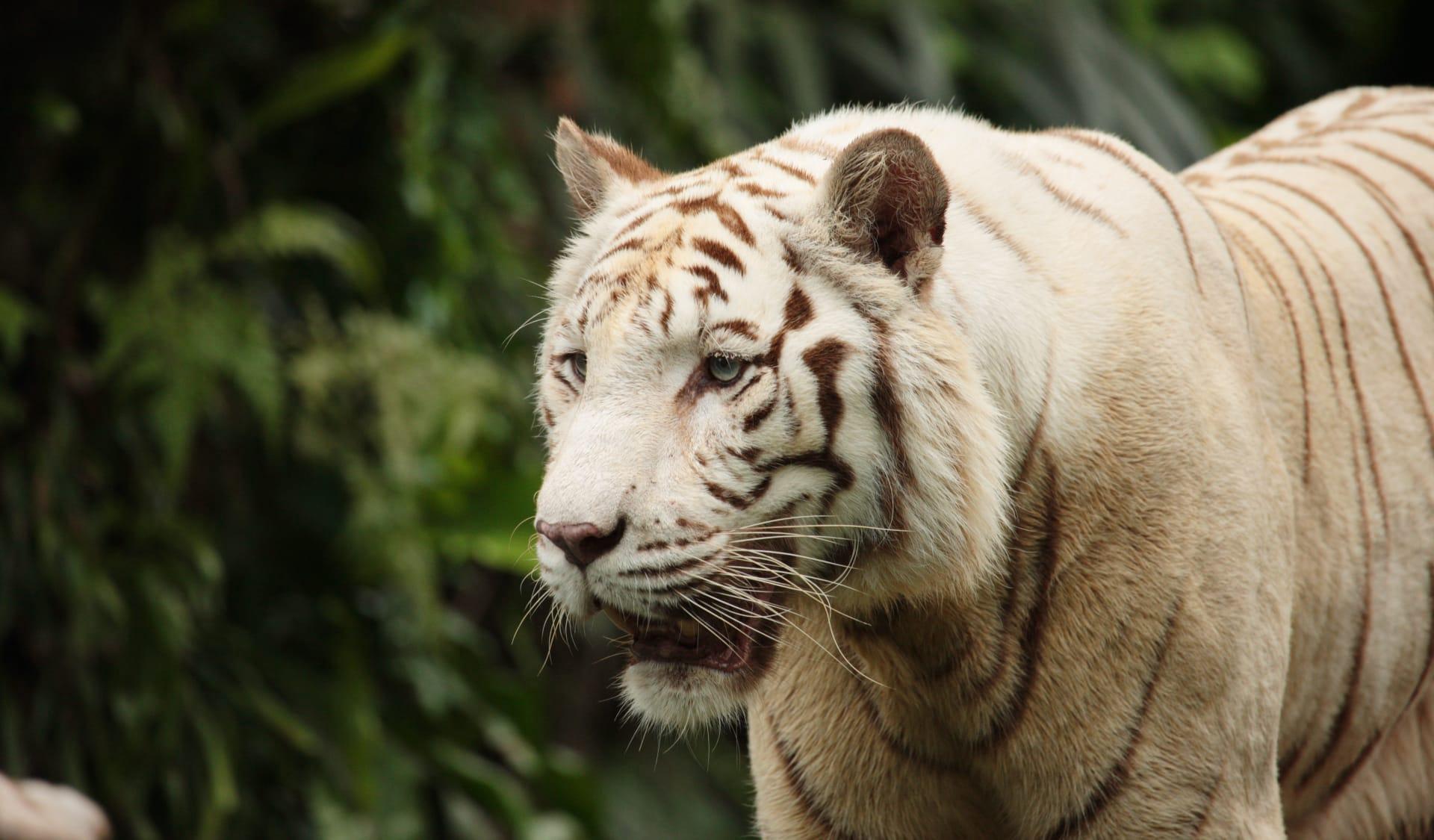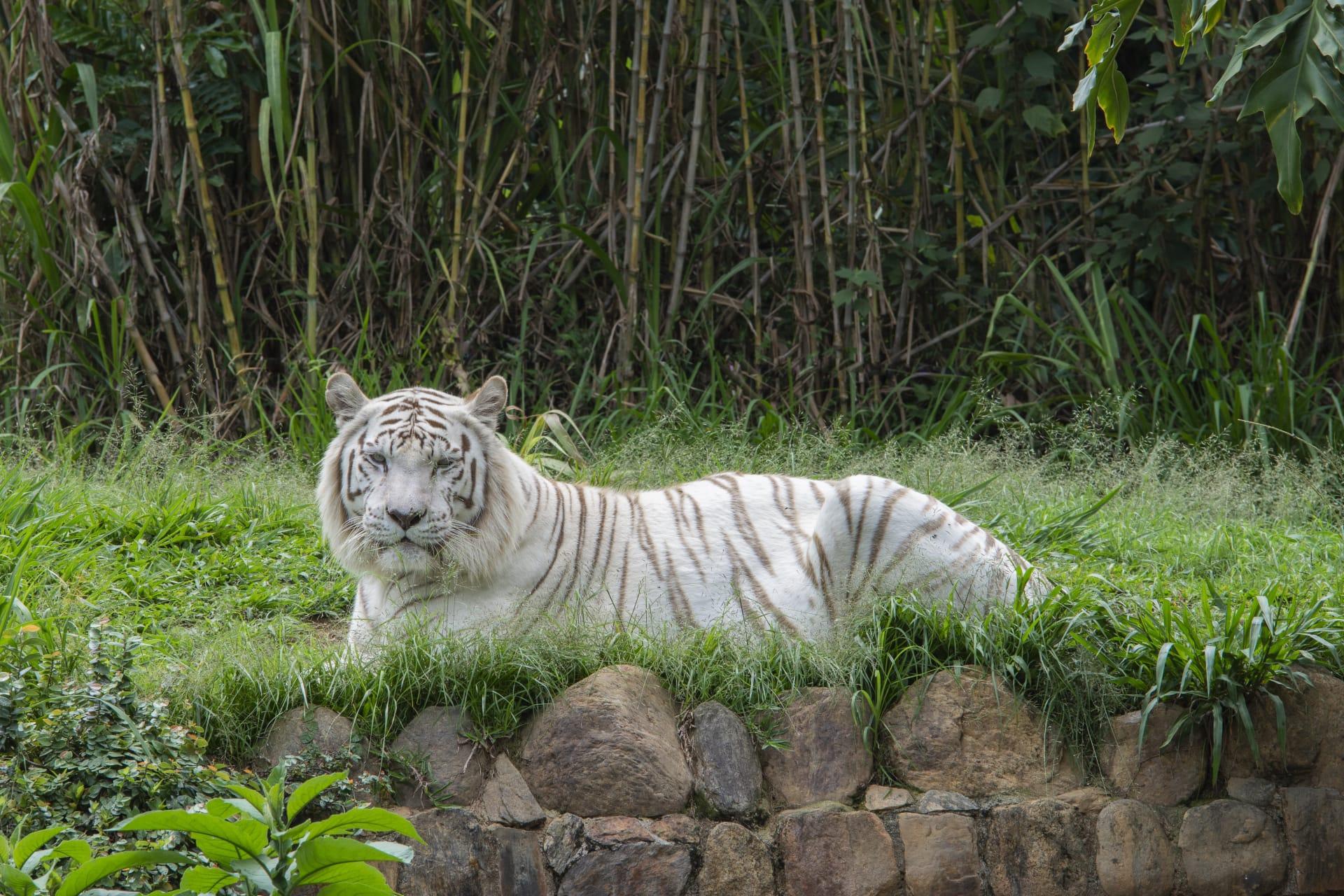White Tiger Trivia
- Home /
- Trivia Question /
- Animal /
- White Tiger Trivia
1
Question: What makes the fur of white tigers white, and do they have stripes?
Answer: The white fur of white tigers is due to a lack of the pigment pheomelanin, which is found in Bengal tigers with orange fur. Despite their white fur, they still have stripes. These stripes are the result of varying density in their fur coloration, not a different pigment. Each tiger's stripe pattern is unique, much like a human fingerprint.
Question: How rare are white tigers in the wild, and where can they be typically found?
Answer: White tigers are extremely rare in the wild, primarily because their coloration is a result of a recessive gene. This makes them stand out in their natural habitat, hindering their ability to camouflage and hunt. Most white tigers are found in captivity, with their population in the wild almost negligible. They are not a separate species but rather a color variant of the Bengal tiger, originally native to India.

2
Question: Is it true that white tigers are albinos?
Answer: No, white tigers are not albinos. Albino animals lack all pigment, resulting in white fur and red or pink eyes. White tigers have blue eyes and still produce a pigment called eumelanin, which is responsible for their black stripes. Their white fur is due to a recessive gene affecting pheomelanin production, not a complete lack of pigment.
Question: Do white tigers have more health problems than orange tigers?
Answer: Yes, white tigers are prone to certain health issues due to the genetic mutations that cause their white fur. These issues include vision problems, such as strabismus (crossed eyes), and they can have a higher susceptibility to skin cancer. Additionally, because the white tiger gene pool is limited, inbreeding to maintain the trait can lead to other genetic defects.

3
Question: How long do white tigers live in the wild compared to in captivity?
Answer: In the wild, white tigers have a shorter lifespan due to their conspicuous coloration making them easy targets for predators and hindrances in hunting. They typically live for about 10 to 15 years. In contrast, in captivity, where they are protected and well-fed, white tigers can live up to 20 years or more.
Question: What is the typical diet of a white tiger in its natural habitat?
Answer: White tigers, like their orange Bengal counterparts, are carnivorous. In the wild, their diet primarily consists of large mammals such as deer, wild boar, and buffalo. They are apex predators and rely on their strength and stealth to hunt. In captivity, their diet is carefully managed to include a variety of meats and supplements to mimic their natural diet as closely as possible.

4
Question: Can white tigers reproduce with orange Bengal tigers, and what would their offspring look like?
Answer: Yes, white tigers can reproduce with orange Bengal tigers. The offspring's coloration depends on the genes inherited. If the cub inherits the recessive gene for white fur from both parents, it will be a white tiger. If it inherits only one such gene, it will be orange. This genetic combination contributes to the rarity of white tigers in the wild.
Question: How do white tigers contribute to the ecosystem, and what role do they play in biodiversity?
Answer: White tigers, like all tigers, play a crucial role in maintaining the balance of their ecosystem. As top predators, they help control the population of herbivores, which in turn influences the vegetation and overall health of the habitat. Their presence indicates a healthy and diverse ecosystem, contributing significantly to biodiversity.

5
Question: Are white tigers considered a separate species from other tiger species?
Answer: No, white tigers are not a separate species. They are a genetic variant of the Bengal tiger, characterized by a mutation that affects fur coloration. This mutation is specific to the Bengal tiger subspecies and does not affect other tiger species, such as the Siberian or Sumatran tiger.
Question: What efforts are being made to conserve white tigers, and why are they important?
Answer: Conservation efforts for white tigers are part of broader tiger conservation initiatives. These include habitat preservation, anti-poaching measures, and breeding programs in zoos to maintain genetic diversity. Conserving white tigers is important as they attract public interest and awareness about tiger conservation challenges, acting as ambassadors for their species.